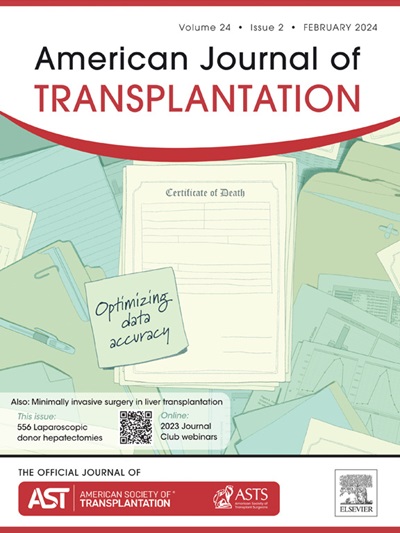The role of induction therapy in lung transplantation
IF 8.2
2区 医学
Q1 SURGERY
引用次数: 0
Abstract
Induction immunosuppression in solid organ transplantation involves a short course of potent immunosuppression in the perioperative period, with the goal of preventing early acute rejection and delaying initiation or reducing the dose of calcineurin inhibitors to minimize kidney injury. The use of induction immunosuppression in lung transplantation has increased over time, with over 80% of adult lung transplant recipients receiving some form of induction therapy. Currently, more than 70% of lung transplant recipients receive induction with an interleukin-2 receptor antagonist, and basiliximab is the most used agent. Despite this now common practice, the evidence to support and guide induction immunosuppression following lung transplantation is limited, making the use of induction somewhat controversial. Here, we review the available literature addressing the use of induction immunosuppression in lung transplant recipients.
诱导疗法在肺移植中的作用
实体器官移植中的诱导免疫抑制包括在围手术期使用短程强效免疫抑制,目的是预防早期急性排斥反应,推迟使用或减少钙神经蛋白抑制剂的剂量,以尽量减少肾损伤。随着时间的推移,肺移植中诱导免疫抑制的使用越来越多,超过 80% 的成人肺移植受者接受了某种形式的诱导治疗。目前,超过 70% 的肺移植受者接受 IL-2 受体拮抗剂的诱导治疗,巴利昔单抗是使用最多的药物。尽管现在这种做法已很普遍,但支持和指导肺移植后诱导免疫抑制的证据却很有限,这使得诱导治疗的使用存在一定争议。在此,我们回顾了有关肺移植受者使用诱导免疫抑制剂的现有文献。
本文章由计算机程序翻译,如有差异,请以英文原文为准。
求助全文
约1分钟内获得全文
求助全文
来源期刊
CiteScore
18.70
自引率
4.50%
发文量
346
审稿时长
26 days
期刊介绍:
The American Journal of Transplantation is a leading journal in the field of transplantation. It serves as a forum for debate and reassessment, an agent of change, and a major platform for promoting understanding, improving results, and advancing science. Published monthly, it provides an essential resource for researchers and clinicians worldwide.
The journal publishes original articles, case reports, invited reviews, letters to the editor, critical reviews, news features, consensus documents, and guidelines over 12 issues a year. It covers all major subject areas in transplantation, including thoracic (heart, lung), abdominal (kidney, liver, pancreas, islets), tissue and stem cell transplantation, organ and tissue donation and preservation, tissue injury, repair, inflammation, and aging, histocompatibility, drugs and pharmacology, graft survival, and prevention of graft dysfunction and failure. It also explores ethical and social issues in the field.

 求助内容:
求助内容: 应助结果提醒方式:
应助结果提醒方式:


